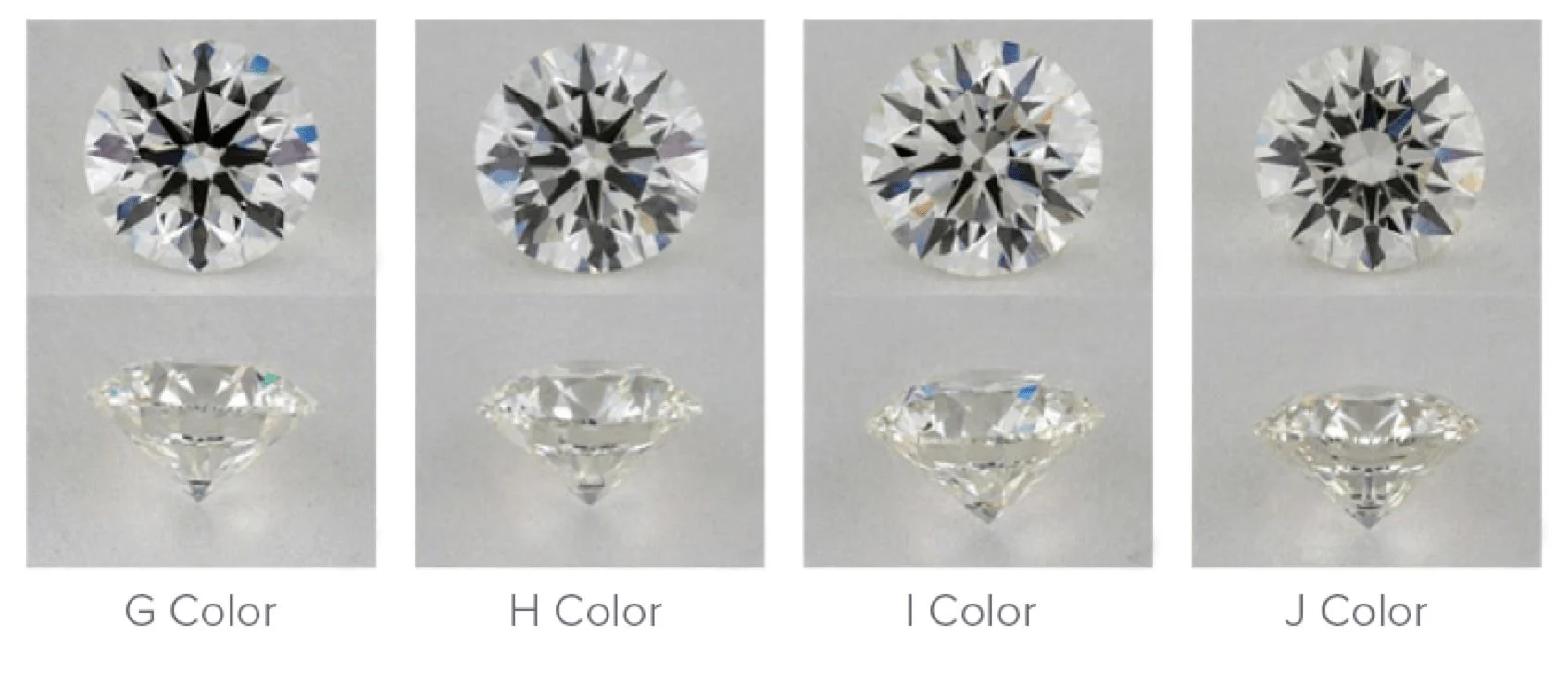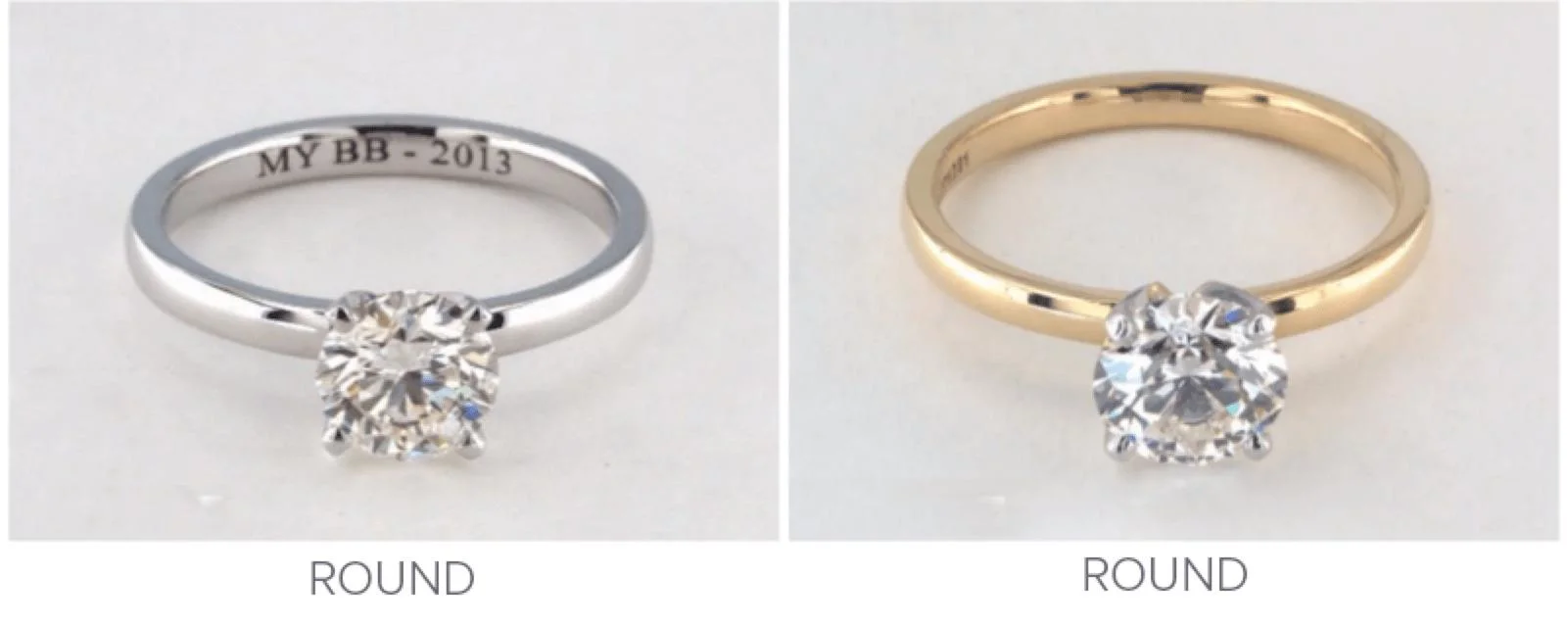What are I color diamonds? | Rare Carat
Rian here - we’ve written these color grade articles for you to get the nitty gritty on each diamond color grade. You can also get the big picture: view our page on the diamond color scale or read more posts in diamonds 101 about specific diamond colors. Enjoy!
The details about I Color Diamonds
Even though I colored diamonds are still within the ‘near colorless’ band, it is generally around this mark that people begin to notice the subtle undertones within the body of a diamond – especially in larger sized stones (1.5 carats and above). We are not talking glaringly obvious canary yellow here, but just enough for you to notice.
While this subtle tint will be more obvious if compared to diamonds three or four grades above, it’s not going to be extremely noticeable within one or two grades, especially face-up on a stone. Have a look at these four gems to see what I mean.

You can definitely see the difference between the J and the G (which remember, faces up colorless like an F), but it is more difficult to see the subtleties between the H and the I color, or between the G and the H for that matter. There is a very slight wash of color in that I stone, but you wouldn’t exactly be sitting a darkened room, cradling it and singing this – the diamond is still going to look pretty damn white once it’s in a setting.
As for negating this tint/hue of color, the same rules apply as I outlined in the previous post about H color stones (read it immediately), and to illustrate one of the most important points, take a look at the difference a setting can make on the color of the stone.

You can see that the white gold setting emphasizes the yellow undertones in the diamond, while the yellow gold works with the undertones. So, the next time someone suggests that you avoid buying an I colored diamond because it won’t look amazing, just break out this bad boy and be on your merry little way.


I Color Diamond Buying FAQs